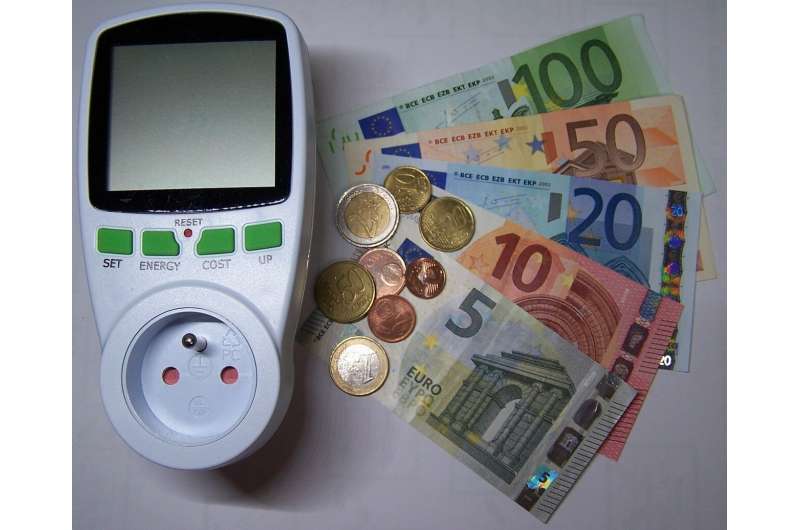This article has been reviewed according to Science X's editorial process and policies. Editors have highlighted the following attributes while ensuring the content's credibility:
fact-checked
trusted source
proofread
Future savings for all-electric households

Our research on the impacts of the energy transition delivers some welcome news for Australian consumers. We've found increased electrification will mean substantial savings on our energy bills. A switch to electric vehicles and appliances, combined with improved energy efficiency measures, could see a household save as much as $2250 annually.
The research was commissioned by Energy Consumers Australia (ECA) to inform its Stepping Up report, which presents a range of policy recommendations to ensure that consumers benefit from the energy transition. Our researchers worked alongside consultancy firm Dynamic Analysis to project future outcomes for household energy bills based on the electrification of buildings and vehicles.
The analysis was undertaken in the context of the Australian Energy Market Operator (AEMO)'s Step Change scenario, which has emerged as the most likely transition scenario for planning purposes.
Australia's net zero goals
The AEMO's Step Change scenario incorporates Australia's emissions target of net zero by 2050. These include:
- Strong energy efficiency
- High uptake of grid level renewables and storage
- High adoption of electric vehicles, rooftop solar and home batteries
- Electrification of gas appliances
We're working with the government and industry to achieve net zero targets as part of our Towards Net Zero Mission.
Opportunities for consumers
Our Chief Energy Economist Paul Graham said AEMO does a brilliant job modeling some of the potential pathways for electricity generation and transmission.
"But that's as far as its remit goes. What we've done with this research is build on AEMO's work and explore how the transition might translate into opportunities for consumers," Paul said.
One of the key findings from our research, which has been published in full as "Consumer impacts of the energy transition: modeling report," is the energy transition will provide ongoing shared system benefits to all customers.
"System benefits are quite complex to explain, but essentially the more electricity people use, the cheaper it becomes for everyone," Paul said.
"If demand increases outside of peak times that means there's no requirement for new infrastructure. Instead, it just makes better use of existing assets, and the cost per unit drops."
Our analysis found significant individual savings for customers who take action at the household level and adopt an all-electric lifestyle this decade. In contrast, the modeling shows consumers who continue to use fossil-fuel powered cars and appliances will see no long-term improvement in their energy costs.
Three areas for energy efficiency
While individual household circumstances obviously vary, the report reveals three key areas of opportunity: electric vehicles, energy efficiency measures, and electrification of household appliances.
Adopting the energy efficiency measures, which are assumed to be available under the Step Change scenario, provides the average household with $500 in savings per year. Solar-battery ownership and switching to electric vehicle ownership can each provide $1,400 to $1,500 savings per year.
In the case of both solar photovoltaics (PV) and electric vehicles (EV), the high upfront costs are offset by longer term savings.
Paul said electric vehicles are attractive because they cut transport costs.
"The cost of the vehicles themselves is falling and that will reach a point where EVs become mainstream rather than something that's solely for early adopters or enthusiasts," Paul said.
"With energy efficiency, clearly the level of opportunity depends on how much you've already done, but for the average household there are still significant savings to be made."
Paul said it's important to take a long-term view. For example, an average household today might save just $200 per year by switching to all electric appliances and an electric car. But by the end of the decade those annual savings will have reached $2,250.
"We know a lot of the available opportunities rely on individual circumstances. If you're renting your property, you might have less control over making some of those changes," Paul said.
"And we're not advocating for consumers to immediately rush out and replace everything they own. It's more to do with natural retirement over the coming decade of items like cars, kitchens, and hot water systems. As those opportunities come up, it may save you in the long term to look at an electric option."


















